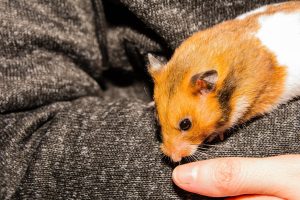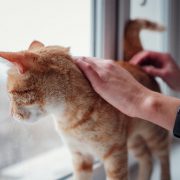Burrowing for answers: Investigating Syrian hamster welfare through owner surveys
Burrowing for answers: Investigating Syrian hamster welfare through owner surveys

our summary:
Fox, A. and Neville, V. (2024) Burrowing for answers: Investigating Syrian hamster welfare through owner surveys. Veterinary Record, e4534.
The aim of this online study was to survey owners of Syrian hamsters about the housing, husbandry, behaviour and health of their hamsters to identify areas of good and poor practice, and to assess whether owners were observing natural behaviours.
The survey, which ran from 24 March-18 April 2023, was distributed online via several channels including social media platforms directly targeting groups of hamster owners. The survey covered a range on topics including owner demographics, hamster diet, housing and husbandry, handling, frequency of observed behaviours and health issues.
There were 548 completed surveys eligible for analysis. All but three owners reported that their hamsters lived in a cage on their own. Most owners provided their hamster with a wheel (98.2%), hideaway (97.4%), chew toy (97.3%), and an area to dig (92.1%), with the majority providing sand (83.8%), a tube (80.7%), a foraging toy (77.6%) and an item for climbing (68.8%)
For bedding, 83.8 % of owners used paper, other substrates reported include: sawdust or wood shavings (29.2%), coconut coir (27.9%), shredded paper (27.7%). Fewer respondents reported using tissue, hay, paper pellets, paper wool, corncob, fluffy bedding, or straw. Only one respondent said that they did not use any substrate in their hamster’s cage.
Owners fed their hamsters on a range of diets including shop or home-made muesli (52%, 9.3%, respectively), with most (74,3%) offering a range of fruits and vegetables as a treat. The majority of owners reported scatter feeding (82.5%) and providing food in a bowl (60.2%), providing food via toys was less commonly reported (28.1%).
Owners reported frequently observing their hamster hoarding food, cleaning themselves and running on a wheel. Biting (either the owner or another person), screeching, bar biting and teeth chattering were less frequently observed behaviours.
A majority of owners (75.5%) said their hamster had not been diagnosed/shown any signs of ill health and 65.9% had never taken their hamster to a vet.
Observations of bar biting were more often reported in male hamsters, those that were handled frequently, hamster ball use, and shallower depth of substrate. Teeth chattering was associated with more frequent cleaning.
Limitations of the study include potential owner bias as those willing to complete the survey may also be most enthusiastic and knowledgeable about hamster welfare and therefore may not be representative of the average hamster pet owner in the UK.
The study provides useful information on how hamster welfare can be improved. Areas of concern are highlighted, these include the use of hamster balls, hamsters being fed diets that are not entirely appropriate, and housing hamsters near predator species. Consideration should be given to the best means of distributing information on hamster care as this survey shows that veterinary practitioners have little direct contact with owners.
The following may also be of interest:
O’Neill, D.G. et al (2022) Demography, disorders and mortality of pet hamsters under primary veterinary care in the United Kingdom in 2016. Journal of Small Animal Practice, 63 (10), pp. 747-755. https://doi.org/10.1111/jsap.13527
Pellett, S. and Mancinelli. E. (2017) Veterinary care of hamsters. Part 1: husbandry and emergency care. Companion Animal, 22 (11), pp. 684-689. https://doi.org/10.12968/coan.2017.22.11.684
Pellett, S. and Mancinelli. E. (2017) Veterinary care of hamsters. Part 2: diagnostics, diseases. Companion Animal, 22 (12), pp. 743-749. https://doi.org/10.12968/coan.2017.22.12.743
Claiming CPD for reading inFOCUS articles
Reading and reflecting on articles can count towards your CPD, and we have a template to help you with the process.
Image copyright attribute: ragnarphoto / 123RF Stock Photo




Leave a Reply
Want to join the discussion?Feel free to contribute!